|
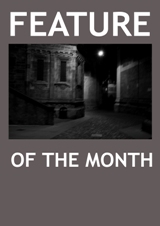
| |
| Proposed
route |
| What
we planned |
...and
what we did |
|
We did a dry run to Marrakech and across the Atlas to
Ouarzazate at the same time last year and felt quite pleased with ourselves to
have survived Africa. However, a cursory glance at the map will reveal
that it is a very long way from Marrakech to Timbuktu!
We then spent half this year working out the best
way to go. Sadly, most of the trans-Sahara routes are impassable due to
border disputes, so we took Hobson's choice and are heading down the Atlantic
coast through Morocco, Western Sahara, and Mauritania, then East to the
Mali border and fumbling our way across to Timbuktu. From there to
Douentza and the Bandiagara escarpment, the unmissable mud mosque at Djenne,
then Bamako and back up to Mauritania and the same route home again.
However, this being Africa, we may well change our plans
en route depending on how long it takes, how often we break down, get lost,
robbed, hospitalised....
|
...in the event we followed our
planned route without significant difficulty or mishap and almost exactly to
schedule. The whole trip took 35 days, but we frequently regretted having
to keep driving to meet deadlines rather than taking a more relaxed
approach. If we repeat the trip, we may opt to leave the car there and fly
back so we have enough time; about 2-3 months would have been ideal, perhaps?
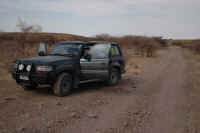 We would also take the ferry to
Spain as the last (and first) 1000km or so through France is really tiresome and
it is also probably no more expensive by the time you include motorway tolls,
fuel and en route expenses. We would also take the ferry to
Spain as the last (and first) 1000km or so through France is really tiresome and
it is also probably no more expensive by the time you include motorway tolls,
fuel and en route expenses.
For more detail, see the itinerary
page.
|
| Navigation |
| What
we planned |
...and
what we did |
_small.jpg)
Difficult
one this! Although priding myself on being able to find my way
through just about any major European conurbation, we were severely
challenged in Marrakech where the almost total absence of signs made
navigation something of a hit and miss affair. So we are aiming to
use GPS and some clever software from Touratech who have scanned some old
French and Russian military maps onto CD. Still not convinced if
total dependence on laptop and satellite navigation based on 20 year old
colonial maps is such a good idea. Failing which we have a
ridiculously small scale (Michelin 741) 1:4,000,000 and my old
orienteering compass!
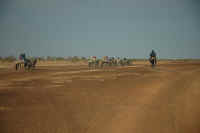 |
...well we got all the way to
Nema (the end of the asphalt on the route d'espoir) without resorting to any of
the large scale maps, getting lost only in Bilbao and Guelmim. We had a
crisis of confidence from there to Oualata as we had naively assumed that the
large scale maps were more or less accurate. At least Oualata was in the right
place, but the piste had migrated up to 10km Westwards in places. We
discovered that it is virtually impossible to use the Touratech software in
on-line mode when moving and indeed singularly failed to get the GPS unit to
talk to the laptop. Quelle surprise!
We made it back to the road at
Nema and were all for finding a proper road into Mali (yes we did think there
might be one) until we met a couple of French guys at the fuel station.
They had recently done the route we intended direct from Nema to Tombouctou via
Léré, and we asked which route they had taken. He pulled out Michelin
741, much faded and ripped, marked with highlighter pen and showed us. He
said just use your GPS as a compass, mark waypoints often (so you can go back if
you do get lost) and you will get there...eventually. And that is more or
less what worked best, using the 741 with occasional reference to some of the
large scale printouts for reassurance.
If you write down the co-ordinates
of each days destination and watch your GPS you can get a pretty good idea if
your piste is going in the right direction, its just a bit disconcerting when
the piste spreads in all directions and you wonder what would happen if you were
to break down.
|
| Vehicle
selection |
| What
we planned |
...and
what we did |
|
Infinite scenarios depending on budget, whether we
really need 4WD or just limit the areas we visit, sell the car there and fly
back, etc., etc. In the end we decided on the safe option of a well-built,
serious off-road vehicle with air conditioning (her indoors just wouldn't go
without it!!). Despite the fact that I loathe the smell of diesel and that
we will have to have at least a couple of spare jerry cans of the stuff in the
car, the unavailability of lead-free petrol made it Hobson's choice again.
Everyone would have us believe that spare parts are most readily available for
Land Rovers and Land Cruisers, and as the prospect of driving a Defender more
than 3,000 miles on tarmac before we even started on the hard stuff left me
reeling, that narrowed the choice to just one vehicle. Unfortunately, with
our budget that means a 1991 Toyota. I
suppose I had better learn how to change a wheel!
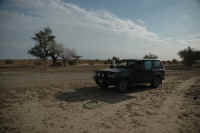
|
Excellent
choice it turned out. Whenever we asked about road conditions ahead,
people would suck their teeth, tell us the horrors and then add..."but that
will be no problem for your Land Cruiser". 1991
is comparatively new for Land Cruisers in that part of the world, with good reason...they
live for ever. The carrying capacity was excellent and allowed us to take
everything inside, so less risk of theft or things falling off. Also
better stability and less wind resistance without roof rack. It
gave the impression of complete indestructibility (and bull bars do have their
uses, particularly when faced with a flock of sheep at high speed) and it also
feels as if you can go anywhere. Generally effortless progress through
soft sand, only used low ratio twice on whole trip. 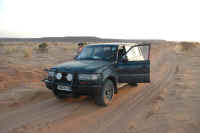
Limited
range when driving fast in Europe, but range remained at up to 400 miles even on
grotty pistes. Two jerry cans gave us sense of security
and were used twice for convenience. Glad we chose diesel as even leaded
petrol is not widely available. |
| Equipment |
| What
we planned...and did |
We
were led to believe we would need sand ladders, high lift jack, 300 spare wheels
and assorted axles, gearboxes and lubricants. Due to budgetary constraints
I decided to take a pair of pliers, a coil of fencing wire (New Zealanders swear
by it), a set of spare bulbs (to appease the French police), a roll of gaffer
tape and an assortment of fuses...plus high lift jack and sand ladders.
However, even this was total overkill in the spare parts department and,
although the wire came in handy to stop the rear stabiliser bar falling off
entirely, the only essential spare part was a 15A fuse for the starter motor! Got
the local garage to check for leaks and perished rubber components before we
left and fitted a new set of tyres, but it may just be that driving cautiously
over the rough stuff avoided anything serious. With hindsight, the best
safety net would have been a second vehicle just in case we were to break down
in the middle of nowhere. We
decided to take plenty of food and water; enough food to have a choice of meals
every day and water for the duration of the non-European bit. We returned
with 80 of the 160 litres of Tesco mineral water and enough tinned curry to last
weeks. Local food was generally good and cheap and safe water available
everywhere. Only problem was booze, but we did not want to risk taking any
into (or through) Mauritania as neither of us relished having the car confiscated
and having to walk home ... or worse. The
tent was completely unnecessary and was the last thing we needed at the end of a
long day. The temperature was fine for sleeping outside (or in the car)
and no problem with bugs. Camping
gas stove was a pain in even a slight breeze, so was used only for coffee in the
end, with tinned tuna featuring heavily on the menu for lunch or when no local
food available. Perhaps
most important apart from documentation (you must take oodles of photocopies of
"fiche" unless you want to spend all day
filling in forms at police checkpoints) is a selection of appropriate
gifts...for children, guides, helpful people and the police. We are not talking
serious bribery and corruption here, it is just nice to be able to give
something of value to the recipient and which really does not cost much.
Our most popular items were biros for police (0.5€ for pack of 10!), cast off
clothing and an old towel. |
| |

|
